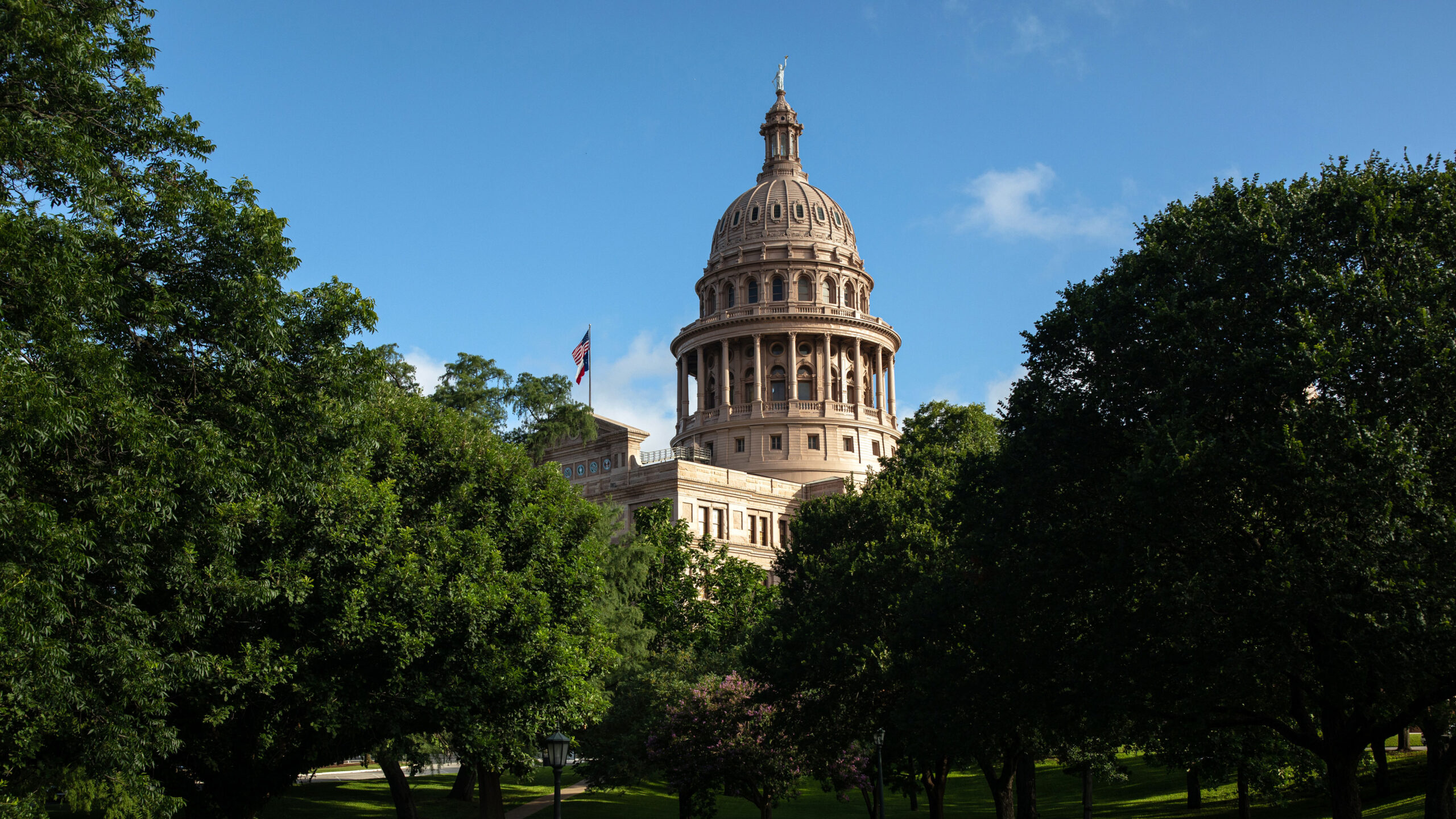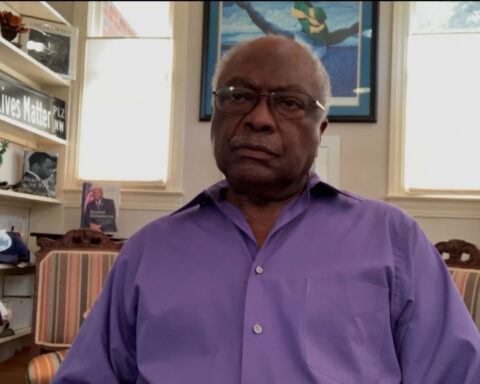With Texas Republicans bolstering their congressional majorities in new maps they approved this week, Senate Republicans in Washington, DC, on Wednesday blocked yet another voting rights bill that would crack down on those kinds of gerrymanders.
The maps that Texas state legislators approved this week under the once-a-decade redistricting process would consolidate the power of White voters and eliminate political competition in the state’s rapidly changing suburbs. The number of majority-White districts would increase, even though the growing Hispanic population is almost entirely responsible for Texas gaining two seats in the US House in the reapportionment process.
Under the maps approved by state lawmakers, which the governor still has to sign, Hispanics — who, like Whites, comprise about 40% of the state’s population, the 2020 Census found — would make up a majority in just seven of the state’s 38 congressional districts. That’s down one from the previous decade’s maps, despite the explosive growth of the Hispanic population in the state. White voters would make up a majority in 23 districts and eight districts would have no racial majority, according to data from the Texas Legislative Council, reported by The Texas Tribune and FiveThirtyEight.
Republicans would be heavily favored to win at least 24 of the state’s 38 districts in next year’s midterm elections and could win one swing district as well, based on a FiveThirtyEight analysis of those new districts’ results in 2020’s presidential election and other recent elections. If Republicans won those 25 seats, they would hold 66% of the US House seats in a state where former President Donald Trump last year won just 52% of the vote.
The maps were the result of the first regular round of redistricting to take place since the landmark 2013 US Supreme Court decision that effectively gutted the Voting Rights Act — a federal law that had required states with a history of discriminatory voting laws, including Texas, to get the federal government’s pre-approval before changing voting laws and implementing new district maps. The state’s previous set of congressional and state legislative maps, approved by lawmakers in 2013, were the subject of court fights into 2019 — and the most recent round’s maps are also likely to face a number of legal challenges.
‘Time is running out’
The new maps also triggered another round of calls from Democratic state lawmakers and activists for Congress to step in.
Those hopes, though, were stymied again Wednesday, as Republicans in the Senate successfully filibustered a bill known as the Freedom to Vote Act, which would overhaul how congressional districts are drawn, in addition to other changes such as requiring all states to offer early voting and allow everyone to cast mail-in ballots.
It was the latest in a long line of voting rights bills blocked by Republicans on Capitol Hill. Amid opposition in their own party, Democrats — who narrowly control the 50-50 Senate because of the vice president’s tie-breaking vote — have not moved to abolish the filibuster, which requires 60 votes for legislation to move forward.
A new federal law is likely the only tool Democrats have to check state-level Republicans from drawing favorable maps and imposing new state-level restrictions on voting, which could potentially tilt the landscape of next year’s midterm elections and future contests in the GOP’s favor. Both parties have a history of drawing maps to improve their standing in Congress and protect incumbents, but Republicans have been much more successful at it in recent decades.
“There is still time. These federal legislative proposals can still be of help. But the time is running out,” said Valerie Street, the president of Our Vote Texas, a non-profit that advocates for voting rights and registration.
The Texas House and Senate approved the new maps this week, and they now await the expected signature of Gov. Greg Abbott, a Republican who is seeking a third term next year.
State lawmakers shored up the seats of a host of Republican incumbents who saw their districts grow increasingly competitive at the end of the last decade. They did so by shifting more left-leaning voters into the districts of Democratic Reps. Lizzie Fletcher in the Houston suburbs and Colin Allred in the Dallas area, and creating a new 37th District near Austin where Democratic Rep. Lloyd Doggett, who currently represents the 35th District, will run.
Texas lawmakers also added a new, Republican-friendly 38th District in the Houston suburbs, and Wesley Hunt — who lost to Fletcher in 2020 — has already entered the race for that new seat, with the support of House Minority Leader Kevin McCarthy.
The new maps, on the heels of the state’s restrictive new voting law that experts say will disproportionately affect urban areas with more diverse and Democratic-leaning populations, lay bare the deep cost of Democrats’ missed opportunities to seize any lever of power in Texas in recent elections, even as the state becomes increasingly competitive.
The 2020 Census showed that the population of Whites and Hispanics in Texas is nearly even, and that nearly all of the growth in the state is a result of Hispanics. But the number of Hispanic-majority congressional districts would shrink from eight to seven under the new maps.
“This map is still not reflective of the Texas population. It doesn’t adequately show where we are, where we’ve come, where the growth has happened over the past decade,” Street said.
One of those seven is the 15th District, currently represented by Democratic Rep. Vicente Gonzalez — who is shifting to seek reelection in the neighboring 34th District, currently represented by retiring Democratic Rep. Filemon Vela — leaving an open seat where Republicans hope to consolidate their gains with Hispanic voters in the 2020 election.
During the redistricting process, Republican lawmakers insisted they were not using race as a driving factor in dividing up districts.
Calling the maps “race blind,” state Sen. Joan Huffman, the Republican who led the chamber’s redistricting process, said at one hearing, “We have not looked at any racial data as we drew these maps, and to this day I have not looked at any racial data.”
But those claims are disingenuous, others said, because Republicans who drew the maps ignored ways in which non-White communities’ political might was weakened, and produced new districts that don’t reflect the reality of a state in which there will soon be more Hispanics than Whites.
“The fact that this gerrymander is achieved at the expense of people of color is not surprising,” said Michael Li, the senior counsel for the Brennan Center’s Democracy Program and a redistricting expert who once led a Texas donor alliance that focused on voter participating in disadvantaged communities there.
He pointed to spots in the new congressional maps in which suburbs are carved into small slivers, with right-leaning districts incorporating some of those slivers as well as large rural areas.
“They’re doing to the suburbs now what they used to do to Austin or big cities. That tells you where Republicans are — that they really need to use the rural areas to neutralize the suburbs,” Li said. “In a lot of ways, it’s a replay of the battles that have been going on for the last couple of decades, since Republicans gained control of redistricting. The one variant is White voters in the suburbs.”
The Texas maps were roundly condemned by state and national Democrats who have loudly criticized GOP lawmakers in Texas over their actions this year in implementing heavily partisan congressional maps and enacting a restrictive new voting law, but have no power to stop those actions.
“Texas Republicans have proven time after time that they don’t want to risk fair elections. They know they are out of touch with the majority in the Lone Star State, and instead of adjusting their policies and politics for their constituents, they’re trying to manipulate the structures of our democracy to artificially hold onto power,” said Eric Holder, the former US attorney general who helms the National Democratic Redistricting Committee.
“Congress must do its part and pass the Freedom to Vote Act to put power back in the hands of the citizens of Texas and the American people — where it belongs,” Holder said in a statement.







